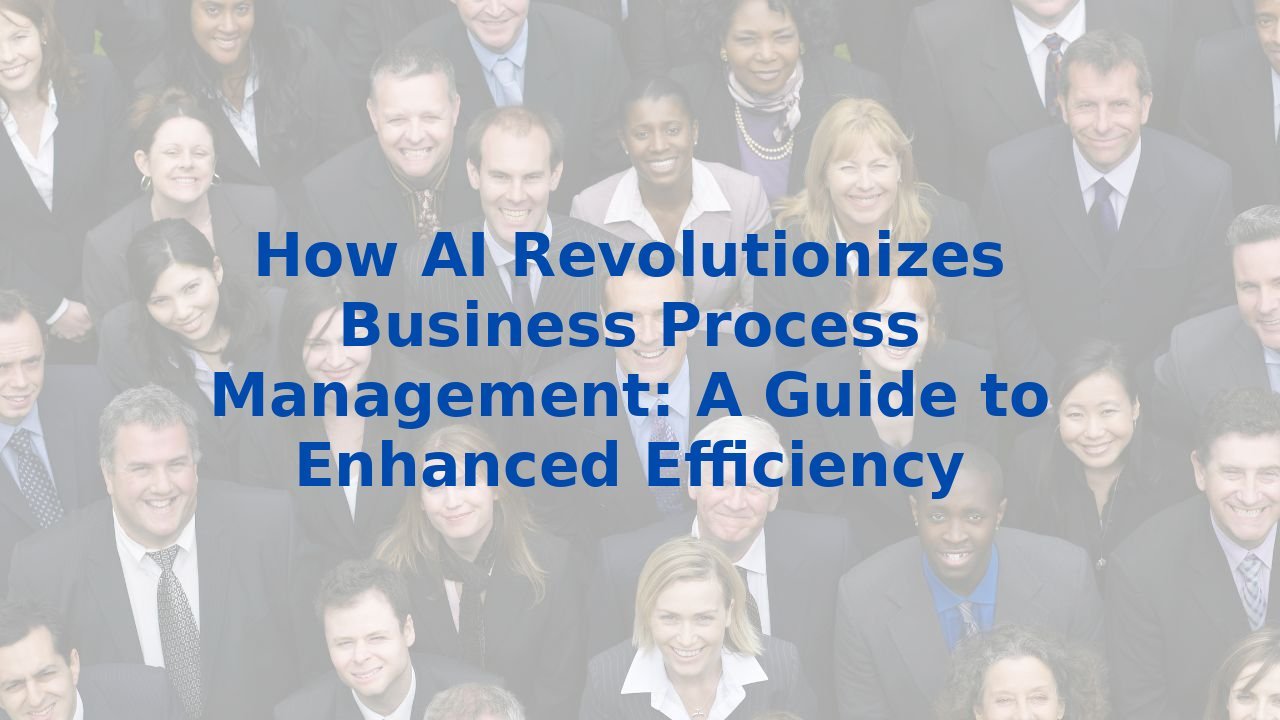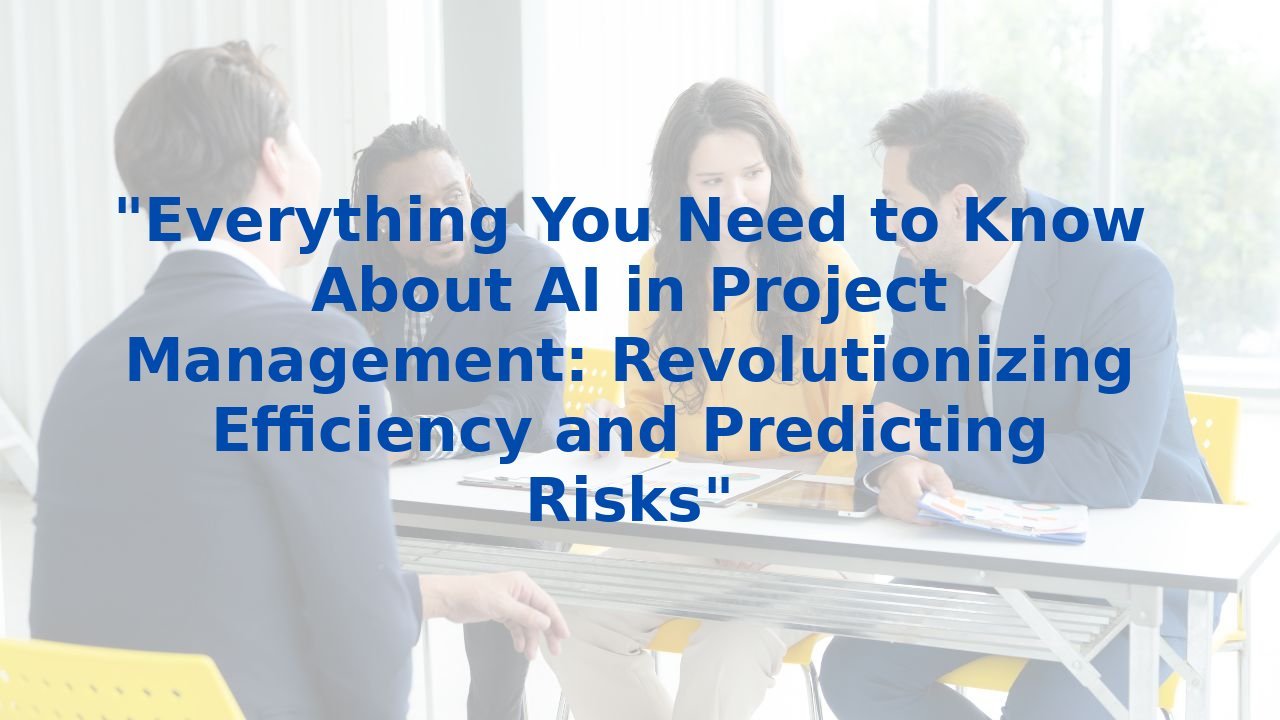How AI Revolutionizes Business Process Management: A Guide to Enhanced Efficiency
How AI Revolutionizes Business Process Management: A Guide to Enhanced Efficiency
As the business landscape continues to shift at an unprecedented pace, the need for organizations to adopt efficient and streamlined processes has never been more crucial. Business Process Management (BPM), an essential component of organizational success, is undergoing a remarkable transformation through the integration of Artificial Intelligence (AI). In this guide, we'll explore how AI enhances various business processes, the tremendous benefits it brings, and the pivotal role of employee training in harnessing this technology.
The Evolution of Business Process Management
Originating in the late 1980s, BPM has evolved into a critical management approach that focuses on systematically analyzing and refining business processes. Traditionally, BPM has relied heavily on manual oversight and human intervention, often leading to inefficiencies and setbacks. However, as businesses seek to stay competitive in an evolving market, the integration of AI is not just a luxury—it’s a necessity.
How AI Enhances Business Processes
AI is revolutionizing the BPM landscape by bringing computational power and advanced algorithms to bear on the challenges of traditional processes. Here are several ways AI is catalyzing change:
1. Process Simulation and Optimization
AI enables organizations to simulate their business processes using historical data to identify patterns and optimize outcomes. By modeling different scenarios, companies can visualize their operations in real-time and refine processes based on key performance indicators (KPIs), achieving a greater understanding of dynamics at play.
2. Process Mining and Analysis
Through AI-driven process mining, businesses can uncover existing workflows by analyzing data from multiple sources. This capability not only visualizes the flow of processes but also reveals inefficiencies and deviations, providing companies with the tools necessary for continuous optimization and swift resolution of potential issues.
3. Automating Routine Tasks
Routine tasks such as data entry, document processing, and various administrative duties are prime candidates for automation. Intelligent Document Processing (IDP), for instance, uses AI to extract meaningful data from unstructured documents, eliminating human errors and enabling employees to devote their efforts to more strategic, value-added activities.
4. Enhancing Decision-Making
AI arms decision-makers with vital insights and recommendations derived from both structured and unstructured data sets. By presenting a comprehensive view of relevant data patterns, AI empowers leaders to make informed decisions while reducing reliance on gut instinct, allowing them to react to emerging challenges with assurance.
Benefits of AI in Improving Efficiency
The integration of AI into business processes offers a treasure trove of benefits. Here are a few key advantages that can foster enhanced productivity:
- Improved Efficiency: By automating monotonous tasks, AI liberates human resources to engage in more strategic and meaningful work, ultimately leading to faster and more robust results.
- Enhanced Decision-Making: Predictive insights generated by AI allow organizations to focus efforts more effectively, maximizing revenue-generation opportunities and facilitating proactive strategies.
- Real-Time Monitoring: AI provides continuous feedback on process performance, enabling companies to stay agile and responsive to ever-changing market conditions.
- Reduced Errors: With the ability to operate using predefined algorithms, the risk of human error diminishes significantly, leading not only to faster decisions but to increased accuracy in business outcomes.
The Importance of Employee Training for AI
While the benefits of AI in enhancing business processes are undeniable, the human factor remains essential. Training employees on how to leverage AI effectively will determine the true success of its implementation. Here’s why investing in employee AI training is critical:
- Understanding AI Tools: Familiarity with AI technologies enables employees to harness these tools within existing frameworks and integrate them seamlessly into their workflows.
- Adapting to Change: A culture of learning will empower employees to embrace the evolving landscape brought about by AI, equipping them with the skills required for new roles and responsibilities.
- Enhancing Collaboration: AI’s collaborative tools offer substantial advantages, but only if employees know how to use them effectively. Training maximizes these tools' potential, fostering synergy across teams.
Conclusion
The integration of AI into BPM is a game-changer, offering an array of advantages that dramatically enhance operational efficiency. From automating mundane tasks to optimizing decision-making, the power of AI is transforming how organizations operate. Yet, to fully realize these benefits, forward-thinking businesses must prioritize employee training that prepares their workforce for the AI-driven future. By harmonizing the capabilities of AI with the adeptness of human intellect, organizations will not just improve efficiency—they will pave the way for sustained success in an increasingly complex world.
If you're looking to equip your employees with essential AI skills, explore tailored training opportunities available to enhance your organization’s capabilities.



